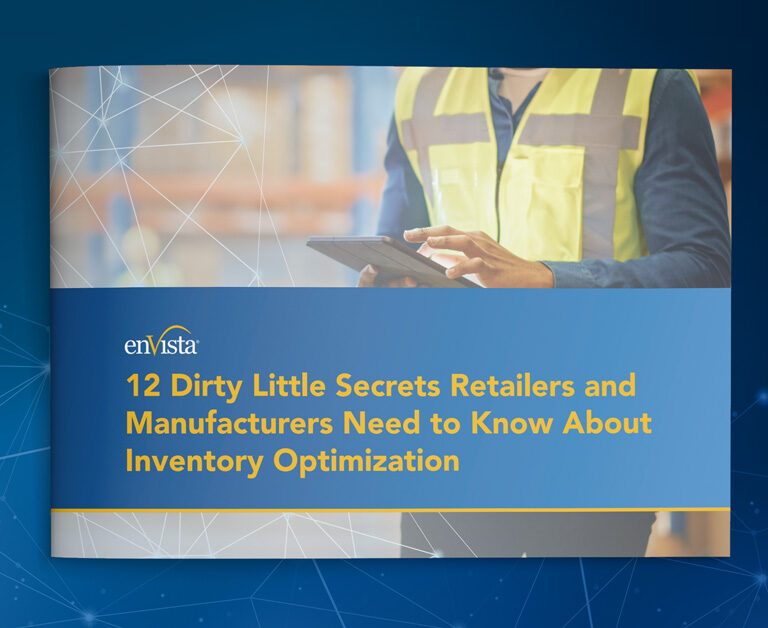- Strategic Alignment & Readiness: A successful retail technology selection starts with a clear understanding of business challenges, future goals and organizational readiness for change. Identifying gaps between current and desired states ensures a solution that aligns with long-term objectives.
- Comprehensive Evaluation Process: A well-defined selection process, including vendor landscape analysis, requirement assessment, business case development and stakeholder buy-in, is essential to making an informed and value-driven decision.
- Change Management & Adoption: Technology alone does not solve business challenges; aligning people, processes and systems is crucial. Organizations must assess their adaptability to new technology and implement change management strategies for a smooth transition.
- Implementation & Long-Term Success: Selecting the right technology is just the beginning—having a high-level implementation plan that considers time, resource allocation and business impact is critical for long-term success.
- Expert Guidance & Industry Best Practices: enVista’s retail technology experts provide a structured, strategic approach to technology selection, leveraging industry expertise to navigate complex vendor landscapes and ensure a seamless, results-driven implementation.
Adding a new software solution to your organization is no small task. It requires significant planning, cross-organization alignment and leadership support. To help you through a successful selection project, enVista’s retail technology experts have compiled the 10 considerations that you must keep in mind. Use the checklist below as you begin your selection journey.
As you navigate your selection journey, you may find areas where you need external support to fully and successfully complete one or more of these steps. enVista’s retail technology experts can take you through the entire process, from defining goals and requirements, to navigating the vendor landscape and narrowing down your selection via customized demonstrations, RFPs and more.
1. Understand the problem you’re trying to solve and the gap between your current- and future-state before selecting a new technology to integrate.
Adding a new software system to your retail technology stack does not happen in a vacuum. The reason for selecting a new system should always be to solve a challenge or enable future goals. Whether you’re aiming to improve end-to-end inventory visibility, reset your foundational operations, gain a comprehensive understanding of demand or leverage AI capabilities, it’s important to understand why you are selecting a new piece of technology.
To achieve this first step, you will need to complete a comprehensive assessment to align your current capabilities with your future state goals and business requirements. For more on this, see our blog on refreshing your business capabilities roadmap.
When assessing your organization’s capabilities, determining what gaps are keeping you from your desired future state will reveal what solution(s) can help close that gap. This will drive much of the strategy around your technology selection.
2. Determine business, technical and vendor requirements for a possible technology solution.
Once you understand the why behind your system selection, you’ll need to consider your business, technical and vendor requirements. These factors will ultimately determine your vendor pool. Some requirements to keep in mind include budget, integration needs, functionality needs and more.
3. Align your people, processes and existing technology before selecting a new system.
When going into a software selection project, it is important to have a realistic understanding of what the technology will solve. Every retail organization is a unique blend of people, processes and technology. While technology could address your challenges and enable the organization’s ability to achieve its goals, it won’t, alone, solve everything. It’s critical to identify what processes you may need to change, eliminate or add and understand the organization’s ability to execute them with new technology as you complete your selection.
4. Consider your organization’s ability to change and integrate new technology.
When beginning your selection, it is important to understand your organization’s level of comfort with technology. If your organization does not already have the expertise to handle state-of-the-art technology, a quick transition to a complex system may not be your best approach. To create a more seamless transition for your workforce, you will want to develop a sound change leadership and management strategy and plan and right-size your technology selection with your capabilities.
Start by asking yourself questions like:
- “Are my employees open to change?”
- “Can my existing systems integrate well with another system?”
- “Are my processes easily adjustable and scalable?”
- “Do my processes maximize the technology opportunity or hinder the ability to recognize the full benefit of my investment?”
5. Commit to the technology selection process, no matter how long it takes.
A thorough selection process can take 12 weeks or more. It’s important not to rush through the process to reach a decision faster, because this could lead to you selecting a less optimal system for your organization’s needs. Beginning the process with a commitment and plan for seeing it through will create more resiliency across your team, enabling you to overcome the hurdles that may arise during the project.
6. Understand the vendor landscape of the specific solutions you’re looking for.
The vast number of technology vendors available in the market can feel overwhelming at the beginning of a selection process. To narrow your search parameters, it’s important to have a deep knowledge and understanding of the vendor landscape and how each vendor aligns with your needs. enVista’s proprietary down select approach can enable a more manageable vendor pool to select from.
7. Don’t forget to consider the business case and time to value when making a selection.
Every project needs a sound business case to garner organizational support. Your business case should not only outline the cost of the investment but also the time to value to recognize the benefit. This step isn’t just for leadership or the board; the entire organization needs to see the reason behind the change and what it brings to the table.
Make sure your business case takes into account the state of your organization’s data. For example, if your data has high integrity and is easily accessible, you may be able to recognize a quicker time to value. Conversely, if your data isn’t widely trusted or easily integrated, you may have to spend time building trusted data history, prolonging the time to value.
8. Get buy-in from key stakeholders and decision makers throughout the technology selection process.
Understand who are the key stakeholders and decision makers in the process. Who do you need approval from to make this decision? Will you seek approval through a business case? Do you need to go in front of the board? Everyone can have a part in the selection process, but not everyone has decision making power. Be collaborative and involve the organization, but make sure the decision makers understand their roles and responsibilities.
9. Complete reference checks before making any final decisions on new or custom technology.
The temptation to skip reference checks can be strong. After all, the software vendor wouldn’t suggest you talk to someone who wouldn’t provide a positive reference, right? Not necessarily. The key to a productive reference check is to ask the right questions.
Asking the right questions of references will shed light upon the entire implementation experience. This will help you get an understanding of the good and the bad from both points of view – the client and the software vendor.
10. Have an implementation plan in place before integrating new technologies or processes.
Having a high-level implementation plan is key if you want to finalize a selection decision. The selection is just the start of the journey. Understanding the implementation timeline, resources needed and the “lift” to the organization is a key piece of information that will contribute to making the right selection.
Engage experts in the process as soon as possible.
Successfully implementing new technology in your retail organization requires a strategic, well-structured approach. By following these 10 key steps, you can mitigate risks, align technology with business goals and ensure a seamless transition. However, navigating the complexities of technology selection—from identifying the right solution to managing change and implementation—can be challenging without the right expertise.
That’s where enVista comes in. Our retail technology consultants bring deep industry experience and a proven methodology to guide you through every phase of the selection process. We help organizations define their needs, assess vendor capabilities, streamline decision-making and develop an implementation roadmap that maximizes ROI. With hands-on expertise in retail operations, supply chain and digital transformation, we empower your team to make confident, future-ready technology investments. Contact us today to leverage enVista’s strategic guidance and industry insights for a successful retail technology selection. Let’s Have a Conversation®.





